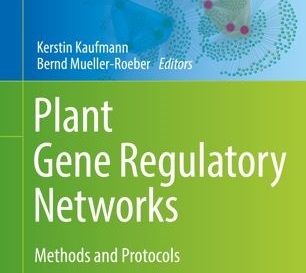Integration of Genome-Wide TF Binding and Gene Expression Data to Characterize Gene Regulatory Networks in Plant Development.
Chen D*, Kaufmann K
Methods Mol Biol. 2017;1629:239-269. doi: 10.1007/978-1-4939-7125-1_16.
Key transcription factors (TFs) controlling the morphogenesis of flowers and leaves have been identified in the model plant Arabidopsis thaliana. Recent genome-wide approaches based on chromatin immunoprecipitation (ChIP) followed by high-throughput DNA sequencing (ChIP-seq) enable systematic identification of genome-wide TF binding sites (TFBSs) of these regulators. Here, we describe a computational pipeline for analyzing ChIP-seq data to identify TFBSs and to characterize gene regulatory networks (GRNs) with applications to the regulatory studies of flower development. In particular, we provide step-by-step instructions on how to download, analyze, visualize, and integrate genome-wide data in order to construct GRNs for beginners of bioinformatics. The practical guide presented here is ready to apply to other similar ChIP-seq datasets to characterize GRNs of interest.
